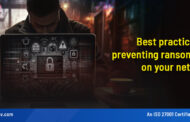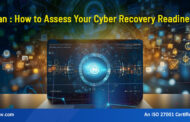Ransomware and phishing are two phrases that may send shivers down your spine. What if we told you that in the first half of 2021, ransomware becomes the top threat? A report issued by researchers from a security group contains disturbing figures on the subject.
Trends of Ransomware –
- Over 7.3 million ransomware threats were reported in the first half of the year.
- Ransomware attacks increased by 1,318 percent year over year in the banking industry.
Ransomware assaults have progressed, and their characteristics distinguish them from traditional ransomware operations. Data exfiltration rather than basic encryption, RaaS models, online collaboration, double extortion, and APT-like targeting are just a few examples. In addition, to boost their chances of receiving the ransom, current ransomware operators have used triple DDoS attacks and quadruple extortion methods.
Furthermore, the report adds –
- COVID-19 provided threat actors with greater attack surfaces and possibilities, resulting in a 4 percent increase in BEC attacks.
- Cryptominers, which were previously accounted for by WannaCry and web shells, were the most discovered malware.
- A total of 160 malicious apps associated with COVID-19 frauds were discovered, with 54 percent of them imitating TikTok.
While ransomware is on the rise, our internal experts feel that the presented data only scratches the surface because many victims do not publicly report occurrences. Furthermore, the Ragnar Locker and Grief ransomware groups have threatened to release victims’ data if they contact law enforcement or data recovery organizations. This would make victims even less likely to report ransomware attacks.
Unfortunately, there is no such thing as 100% protection from cyber-attacks. However, there are cutting-edge cyber defense tools, such as eScan’s cyber vaccination edition, that can safeguard businesses and aid in effective ransomware protection. Cybercrime is constantly changing, and ransomware is currently popular. We advise you to be digitally safe now, than being sorry later.
To read more, please check eScan Blog







